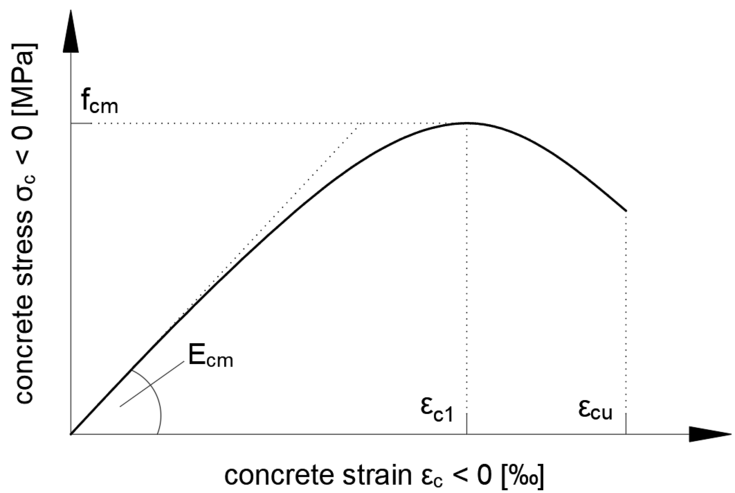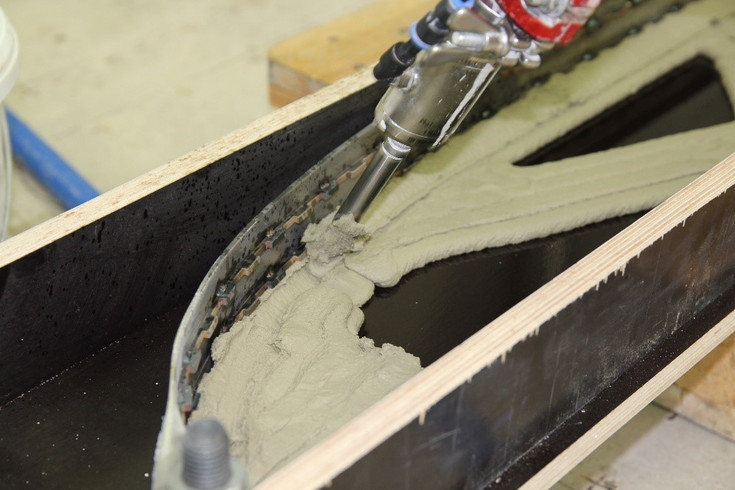…pushing concrete material usage to the limit
Let‘s overcome the gap between civil engineering and mathematical optimization – send us your best geometries of a topology optimized concrete girder! The aim is to create a topology optimized concrete girder under two conditions:
- Minimum environmental impact (remark: directly linked to the girder mass)
- Preservation of required load-bearing capacity
The submitted geometries will be assessed in a two-stage evaluation process, considering environmental as well as structural performance. The official Kick-off will be at the 16th of June, 2021. Full-scale experiments of the top geometries will be conducted in the research group’s laboratory based in Vienna, Austria. General conditions on the submission can be found further down. You can also watch this video about the competition's specifications. More information on the organizer of the competition, the Research Group for Research-Efficient Structural Engineering led by Prof. Dr. Benjamin Kromoser, can be found here.
2D optimization problem
This competition’s 2D optimization problem is illustrated in the figure below (dimensions in meters and millimeters). The concrete girder has to withstand a maximum point load of 30kN. Two different optimization strategies can be pursued, focusing either on a compression-dominant design with little to no reinforcement needed or the possibility of consciously allowing designated tension zones. Please check, if a structural design can be generally derived from the submitted geometry: Is an integration and/or assembly of the needed reinforcement feasible? Does an additional simplification of the optimized design benefit aspects of manufacturability? For a potential consideration of the nonlinear material behavior of concrete during the optimization process, e.g. via stress constraints, multimaterial modeling, concrete damage considerations or any other approach, the respective material properties are outlined below.

Material properties - concrete
The given material properties (mean values!) are based on Eurocode 2:
- fcm = -33 MPa …compressive strength (cylinder: Ø 150mm, height 300mm)
- fctm = 2.6 MPa …axial tensile strength
- Ecm = 31,000 MPa …modulus of elasticity
- εc1 = -2.2‰ …compressive strain at peak stress
- εcu = -3.5‰ …ultimate compressive strain
- ρc = 2,400 kg/m³
In tension, the material behavior can be assumed to be linear-elastic until brittle tensile failure. In compression, the relationship between concrete compressive stresses σc and concrete compressive strains εc for uniaxial compression can be mathematically described according to the fib Model Code for Concrete Structures 2010 (outlined in the figure and equation below with ε in ‰ and σ in MPa):


Material properties - reinforcement
The concrete girder can either be externally reinforced with a steel laminate along the lower edge of the beam and/or conventionally with internal stainless steel reinforcement. The respective material properties are as following:
- fy,external = 355 MPa …yield strength of external reinforcement (steel laminate)
- fy,internal = 500 MPa …yield strength of internal reinforcement (stainless steel)
- Eexternal = Einternal = 210,000 MPa …modulus of elasticity
- ρs = 7,850 kg/m³
An example of a 3D printed concrete beam with a steel laminate as external reinforcement is illustrated in the figure below.

Credits: Nadine Stoiber
Two-stage evaluation process
1st step – Environmental assessment
How much material was needed? What is the environmental impact of the submitted designs? The received submissions will be ranked according to the Global Warming Potential (production phase according to EN 15804) with the top designs (lowest environmental impact) moving on to the second phase of the evaluation process. Note that neither an adaption of the concrete mix (e.g. lower cement content) nor of the used reinforcement material is permitted to lower the environmental impact. Following impact indicator values can be consulted for self-evaluation:
- GWPconcrete = 82.1kg CO2-equivalent/tonne
- GWPexternal reinforcement = 1.5kg CO2-equivalent/kilogram (steel section)
- GWPinternal reinforcement = 3.8kg CO2-equivalent/kilogram
2nd step – Structural assessment
For the second evaluation step the main criteria will be manufacturability. After the competition, full-scale experiments of the winning designs will be conducted at the research group’s laboratory in Vienna, Austria. So, while reducing material think about simultaneously optimizing the structural performance and the overall buildability. Ask yourself: Is the required load-bearing capacity fulfilled? Did you adapt and simplify the geometry to facilitate manufacturing? Is the integration of reinforcement generally feasible? The load-bearing capacity of your design will be evaluated based on a nonlinear numerical assessment. Compliance with the outlined structural requirements is assessed according to following categories:
- Load-bearing capacity
- Aspects of manufacturability
FAQ
Do stability problems need to be considered?
No, no stability problems such as buckling have to be considered. The problem is in 2D.
Please submit your submission folder under the following link, containing your final optimized design (e.g. drawing with comprehensible dimensioning in PDF-format, CAD-files, etc.) as well as the completed questionnaire, which can be downloaded here:
Please name your submission folder as following: cgo-comp_affiliation_date of submission.
Submission closed!
For any questions on the competition please contact Dipl.-Ing. Nadine Stoiber (nadine.stoiber [at] boku.ac.at).
